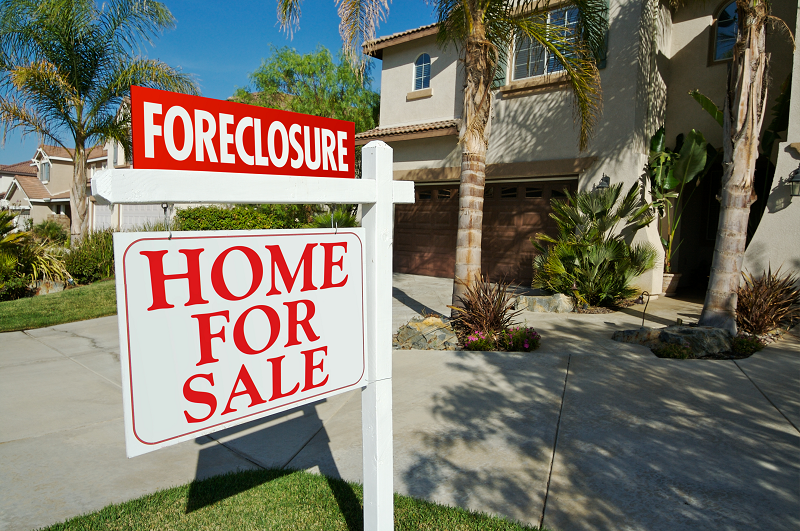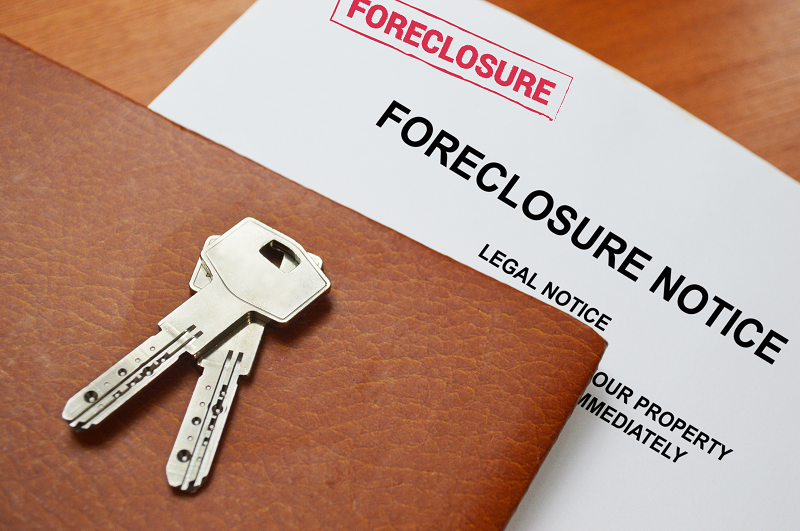
Are you a homeowner who’s missed a few mortgage payments? Maybe you’ve received a notice of default and know your mortgage loan lender is pursuing a foreclosure.
The idea of losing your home may be terrifying, but knowing the next steps can help. You may be able to stop or stall the foreclosure process or at least avoid any further legal issues.
Below, we’ll walk through Idaho’s foreclosure timeline in detail. That way, you can determine your next steps. Foreclosure may be scary, but understanding the process and your action options can help make it manageable.
The Idaho Foreclosure Process
Since the 2008 housing market crash and the resulting foreclosure crisis, legislators have passed state and federal laws that help protect borrowers from foreclosures.
In Idaho, homeowners typically sign a promissory note and a deed of trust when they purchase their home and arrange for bank financing. These documents, along with federal and state laws, give homeowners the right to a lengthy pre-foreclosure process.
Pre-foreclosure
Before foreclosure begins, borrowers will receive a breach letter, letting them know they’re behind in payments. The breach letter also gives homeowners a chance to fix their default.
With the breach letter, lenders must also give homeowners information on how to avoid foreclosure, including information on a loan modification, loan forbearance, and repayment plans.
During the pre-foreclosure process, borrowers will still face additional fees.
They will typically rack up late fees and may also acquire inspection fees. Late fee schedules are listed on the promissory notes, which borrowers sign when they purchase their home. Inspection fees depend on when and how often the lender requires an inspection to ensure the house is lived-in and maintained.
The official foreclosure can begin if the borrower has not provided payment, including repayment of any accrued fees, within 120 days.
Judicial vs. Non-Judicial Foreclosures
Idaho foreclosure law provides for two types of foreclosure: judicial and non-judicial. Judicial foreclosures begin when the lender files a lawsuit asking for a court order to allow the foreclosure sale.
First, the homeowner can provide a written answer in defense. Then, the judge will determine which party wins. If they rule in favor of the lender, the property can be sold at auction.
Going to court is a lengthy process, and most lenders hope to avoid it. So, it’s much more common to have a non-judicial foreclosure. Non-judicial foreclosures follow Idaho statutes. We’ll detail the process below.
1 – Notice of Default
In a non-judicial foreclosure, the notice of default (NOD) officially begins the Idaho foreclosure timeline. The lender will file a NOD with the County Recorder’s office and mail a copy to the homeowner (Idaho Code Ann. § 45-1505).
When they send the NOD, they must also send a loan modification notice if the borrower is also the primary resident of the home.
The loan modification notice provides information on loan modification and an application form. As the borrower, you can choose to fill out the application and return it to the lender. From there, the lender has 45 days to accept or reject the application and cannot continue with the foreclosure until they give a formal response.
2 – Notice of Foreclosure Sale
When the lender sends a NOD, they may also send a notice of sale. Alternatively, they could wait and send this later. However, the notice of foreclosure sale must be sent at least 120 days before a sale takes place (Idaho Code Ann. § 45-1506.)
In Idaho, foreclosure laws state that the lender must attempt to personally deliver the notice of sale at least three times to an adult occupant. They must do this at least thirty days before a sale takes place. They must also attempt to post a notice on the home.
The lender must publish notice of the sale in a newspaper once a week for four straight weeks. And, they must record an affidavit stating that they mailed, posted, and published the notice of sale as required.
3 – Foreclosure Sale

At the foreclosure sale, the lender can bid up to the total amount owed by the borrower, including any late fees and inspection costs. That means they can bid for less than the amount you owe.
If that happens, and the lender ends up being the highest bidder, your home undergoes a short sale. In that case, Idaho law allows the lender to gain a deficiency judgment against you.
So, you still have to pay off the remaining balance owed not covered by your home’s sale.
If a 3rd party makes the highest bid, and it turns out to be more than the amount the borrower owes, this is called excess proceeds. In that case, you’re entitled to receive the extra money.
4 – Real Estate Owned (REO)
When the lender turns out to be the highest bidder on a property, the property becomes real estate owned or REO. Banks sell REO properties by listing them on their websites, using their loan officers, or by enlisting real estate agents to sell these properties for them.
Before selling, the bank or lending institution will re-key the property and make any emergency repairs, but they don’t do any cosmetic work or make non-emergency repairs. So, often, REO properties are “fixer-uppers.”
5 – Eviction
After a foreclosure sale, tenants or former homeowners must leave the property. If you don’t, the new owner, be it the bank or someone else, can either:
- Make a cash-for-keys offer
- Begin the eviction process
Idaho foreclosure law states that the home purchaser may take possession of the property ten days after the sale. So, if you’re there after ten days, the purchaser can file for an eviction.
What To Do if Your House Is in Foreclosure
If you’ve missed payments and your house is in foreclosure, there are actions you can take. Depending on where you are in the foreclosure process, you may be able to stop or delay things by reinstating the loan, redeeming the property, or filing for bankruptcy.
Reinstating the Loan
Under Idaho state foreclosure laws, you have the right to prevent foreclosure on your home by reinstating your loan. You can do this up to 115 days after receiving the NOD. To do so, you’ll have to pay all your missed payments, fees, and other incurred costs in one lump sum (Idaho Code Ann. § 45-1506).
Sometimes, your deed of trust will give you more time to reinstate, so always check your loan paperwork.
Property Redemption
You can redeem the property if you pay off the loan in full before foreclosure. In some states, there’s a property redemption period during which you can redeem your home after foreclosure. Unfortunately, Idaho is not one of those states.
Filing for Bankruptcy
Filing for bankruptcy can essentially put a foreclosure process on pause. If your foreclosure will happen in a matter of days, you can file for bankruptcy and put an “automatic stay” on proceedings. The stay will temporarily stop the lender from continuing the foreclosure and may buy you several months.
Selling Your House While in Foreclosure in Idaho
Selling your house while in foreclosure is possible, but there are a few things you need to make sure of before you begin.
First, you must ensure that all owners are on board with the plan. Often, foreclosures occur amid divorce or another disagreement between homeowners. You can’t move forward with a sale if all property owners don’t agree to it.
Second, you need to go into the sale with reasonable expectations. You can certainly receive the fair market value of your home, but you probably won’t make more than that. If you owe more than the home is worth in the current market, you may still owe money to the bank post-sale.
Third, it’s essential to understand that selling will not pause the foreclosure process, meaning the sale needs to happen quickly.
To sell a house fast in Idaho, you’ll need help, and it may be a good idea to consider a cash home buyer.
There are many benefits of selling a house for cash. Cash offers close faster, which can be crucial when a foreclosure is looming. Cash offers also incur fewer fees, which is beneficial when you owe money to a lender.
If you’re dealing with a foreclosure and seeking cash home buyers in Boise, we can help. We buy houses Star, Meridian, Nampa, and Boise homeowners are trying to sell. And we buy them as is.
So whether you’re dealing with a home that needs some minor repairs, or a complete tear-down, we want to help. Plus, we can close within seven days, which is ideal during a foreclosure.
Conclusion
If you’re dealing with a home foreclosure in Idaho, you’re probably also dealing with stress and fear. Losing your home is a terrifying prospect, but there are things you can do about it.
Learning about Idaho’s foreclosure timeline is the first step when you are dealing with a possible foreclosure. Then, you can make a well-informed decision about what to do next.

